Florida’s unique geographic position and subtropical climate have made it a paradise for reptiles. From the iconic American alligator to the vibrant green anole, the Sunshine State hosts an impressive diversity of scaled residents that have adapted to its varied ecosystems. While many of these species have been part of Florida’s natural heritage for millennia, others face increasing challenges from habitat loss, climate change, and competition from invasive species. This exploration of Florida’s native reptiles reveals their fascinating adaptations, ecological importance, and the conservation challenges they face in an ever-changing landscape.
The American Alligator: Florida’s Iconic Reptile
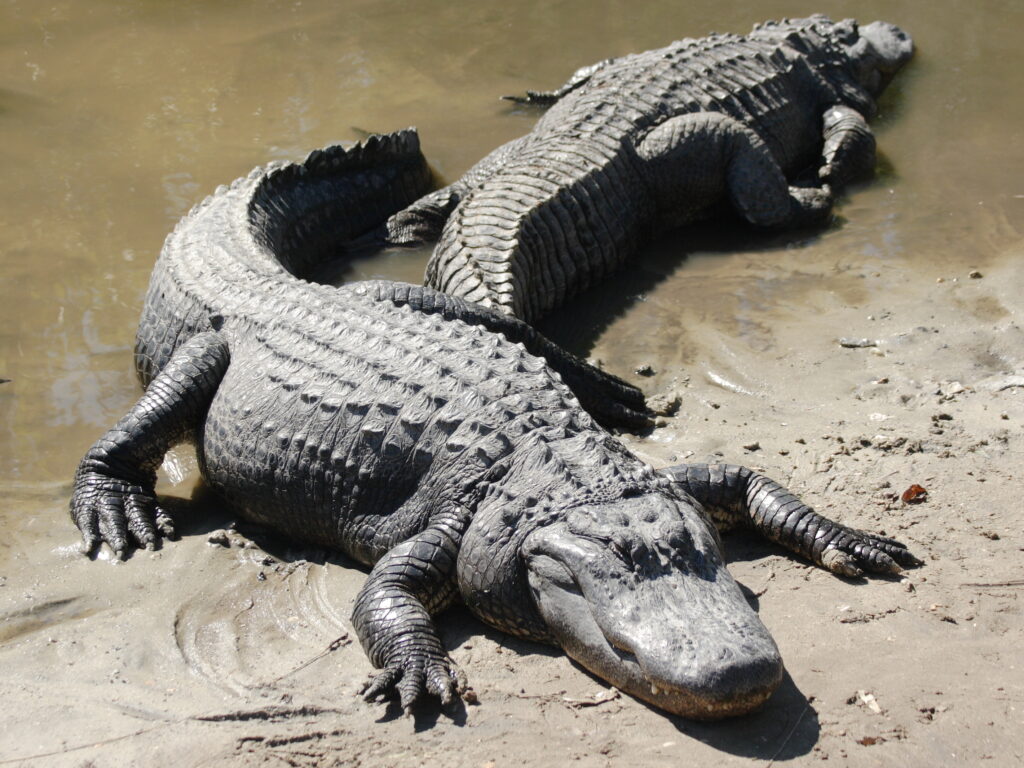
The American alligator (Alligator mississippiensis) stands as Florida’s most recognizable reptile, having made a remarkable recovery from near-extinction in the mid-20th century. These massive reptiles can grow up to 15 feet long and inhabit freshwater wetlands throughout the state, serving as a keystone species that shapes their environment through the creation of “gator holes” that provide vital water sources during dry periods. Despite their fearsome reputation, alligators typically avoid human contact, though increasing development has led to more human-alligator interactions. Their successful recovery represents one of America’s greatest conservation successes, transforming from an endangered species to a managed game animal with a stable population estimated at over one million in Florida alone.
Gopher Tortoise: The Underground Architect
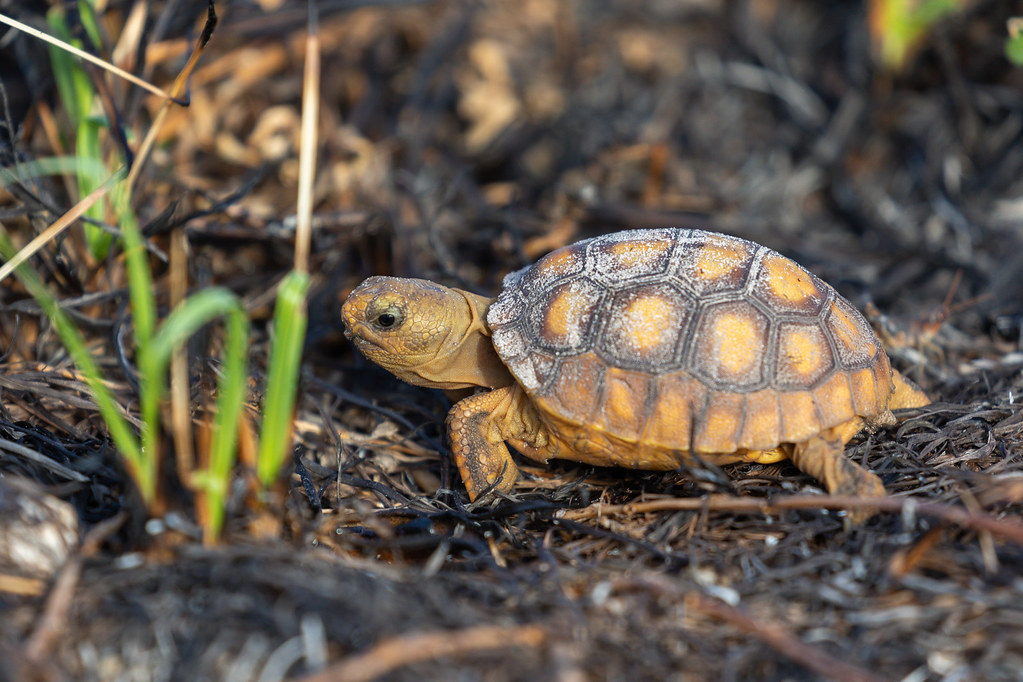
The gopher tortoise (Gopherus polyphemus) plays a crucial ecological role as Florida’s only native land tortoise and a designated threatened species. These long-lived reptiles, which can survive for over 60 years, create extensive burrows that extend up to 40 feet long and 10 feet deep in Florida’s sandy soils. These underground retreats provide shelter for more than 350 other animal species, earning the gopher tortoise its designation as a keystone species. Development threatens these tortoises as their upland habitats are prime real estate for human construction, with populations declining by an estimated 80% over the past century. Conservation efforts now include habitat protection and relocation programs when development occurs in their territory, though controversy exists about the effectiveness of these relocation efforts.
Eastern Indigo Snake: The Gentle Giant
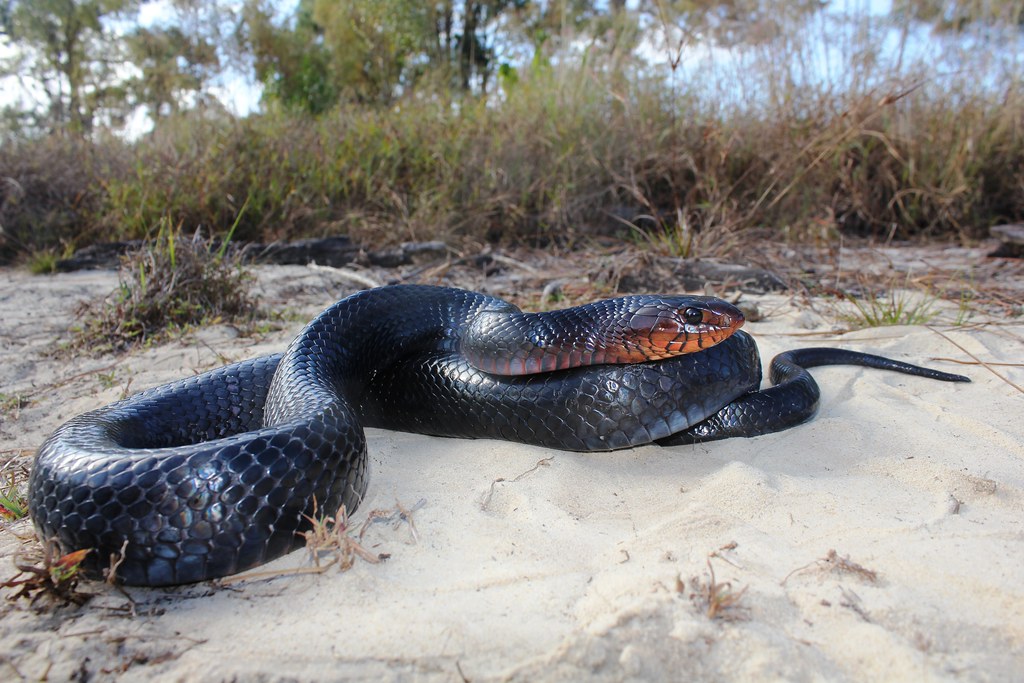
The eastern indigo snake (Drymarchon couperi) holds the distinction of being North America’s longest native snake, reaching impressive lengths of up to 8 feet. With its iridescent blue-black coloration and docile nature, this non-venomous constrictor is one of Florida’s most magnificent yet threatened reptiles. Eastern indigos have large home ranges and often rely on gopher tortoise burrows for shelter, making them particularly vulnerable to habitat fragmentation and development. Their diet includes a variety of prey, including venomous snakes like rattlesnakes and cottonmouths, making them beneficial controllers of potentially dangerous species. Despite federal protection since 1978, indigo snake populations continue to decline due to habitat loss, road mortality, and illegal collection for the pet trade.
American Crocodile: Florida’s Lesser-Known Crocodilian
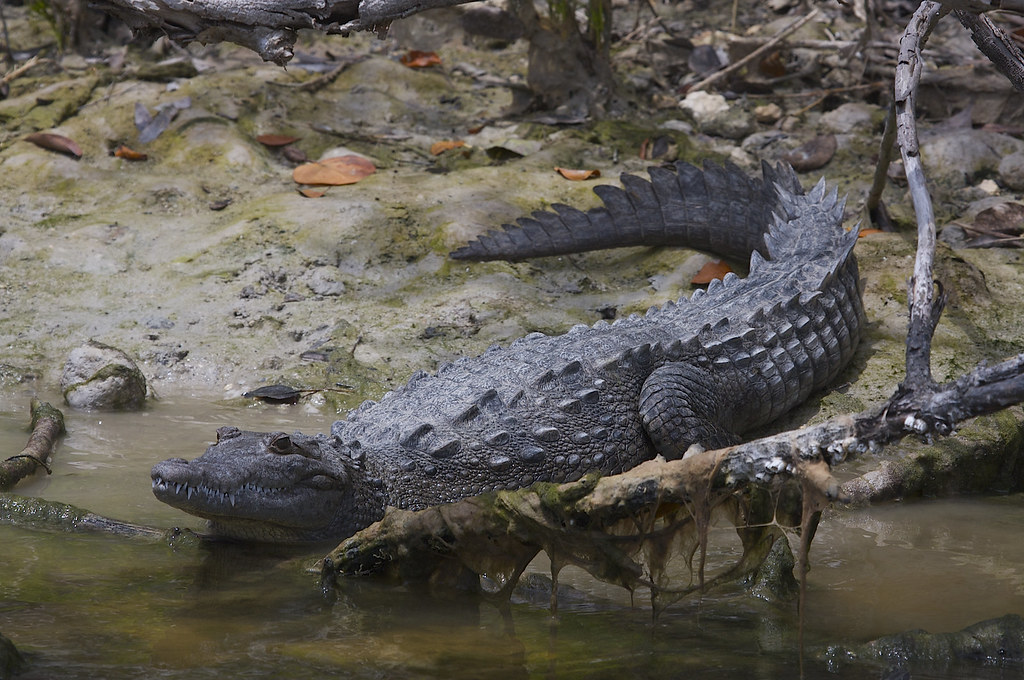
The American crocodile (Crocodylus acutus) represents one of Florida’s rarest and most misunderstood native reptiles, inhabiting the southern tip of the peninsula in brackish and saltwater environments. Unlike their more common alligator cousins, American crocodiles are typically shyer around humans and have a more limited range in the United States, with only about 2,000 individuals estimated to live in Florida. Their distinctive V-shaped snout and visible lower teeth when their mouth is closed help distinguish them from alligators. Once endangered with fewer than 300 individuals in the 1970s, conservation efforts have helped the American crocodile recover enough to be downlisted to threatened status. Climate change and sea-level rise now present new challenges for this species as rising salt water intrudes into their nesting areas.
Florida Box Turtle: The Forest Wanderer
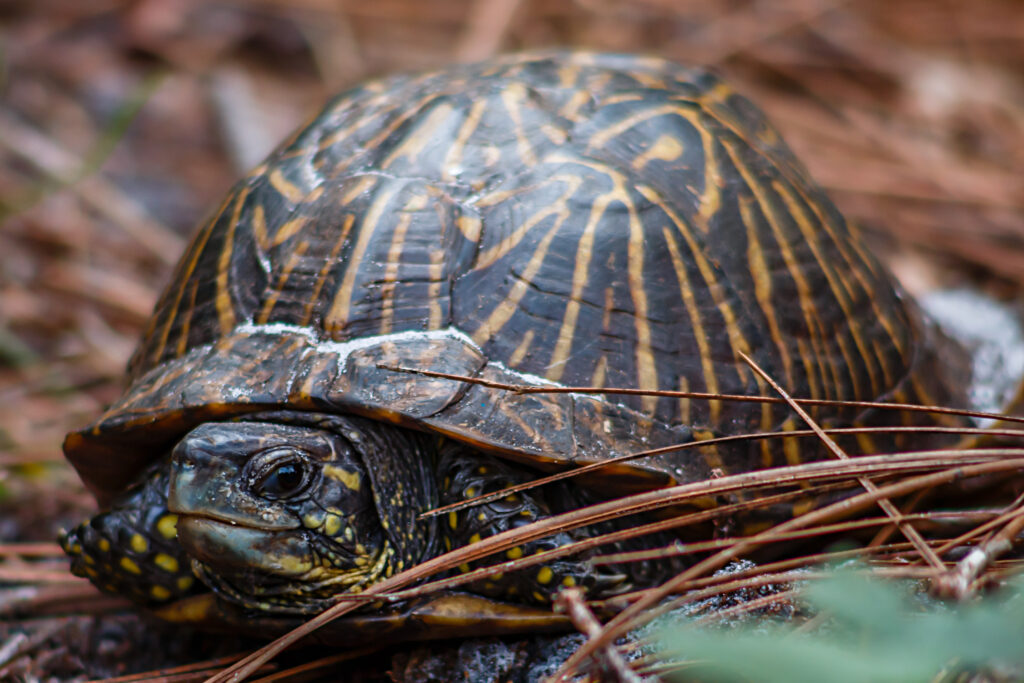
The Florida box turtle (Terrapene carolina bauri), a subspecies of the eastern box turtle, showcases some of the most vibrant patterns and colors among Florida’s native reptiles. These terrestrial turtles feature distinct yellow or orange radiating patterns on their dark brown to black carapace, making them quite striking in appearance compared to other box turtle subspecies. Unlike aquatic turtles, box turtles spend their lives in moist woodlands and pine flatwoods, where they forage for a diverse diet of mushrooms, berries, insects, and carrion. Their remarkable adaptation includes a hinged plastron (lower shell) that allows them to completely close their shell for protection against predators. Unfortunately, box turtle populations face decline due to habitat loss, road mortality, and illegal collection for the pet trade, with their slow reproductive rate making population recovery particularly challenging.
Eastern Diamondback Rattlesnake: Florida’s Largest Venomous Snake
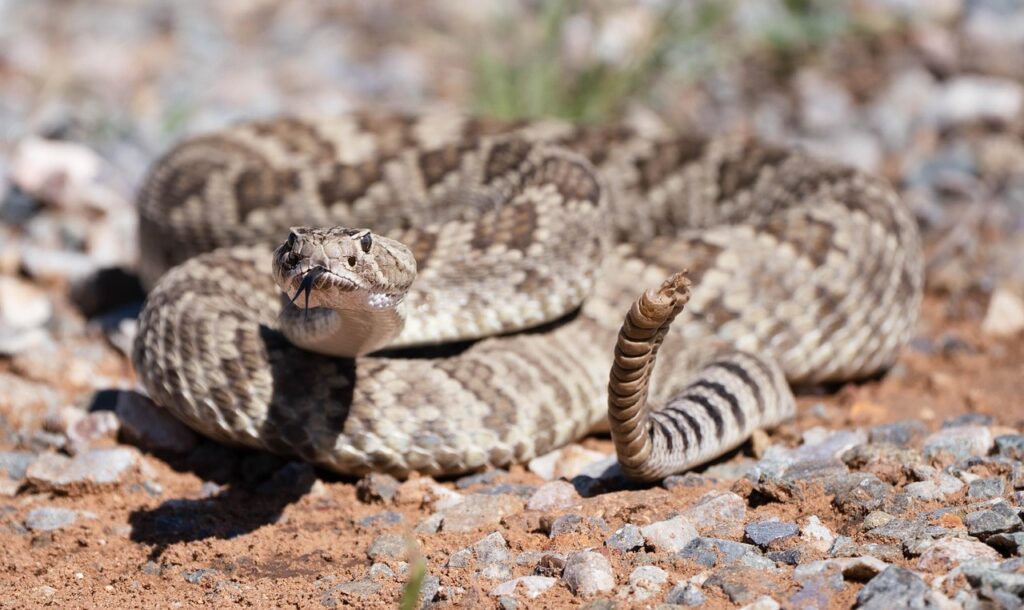
The eastern diamondback rattlesnake (Crotalus adamanteus) commands respect as North America’s largest venomous snake, with specimens occasionally reaching over 7 feet in length. These iconic reptiles are recognized by their distinctive diamond pattern, large triangular head, and the namesake rattle that serves as a warning to potential threats. Despite their fearsome reputation, eastern diamondbacks are typically non-aggressive and prefer to avoid human encounters, using their rattle as a warning system rather than striking without provocation. Historic persecution, habitat loss, and fragmentation have caused significant population declines, with some estimates suggesting they now occupy less than 10% of their historic range. Conservation concerns have led to proposals for federal protection, though the eastern diamondback currently lacks endangered species status despite its declining numbers throughout the southeastern United States.
Green Anole: Florida’s Native “Chameleon”
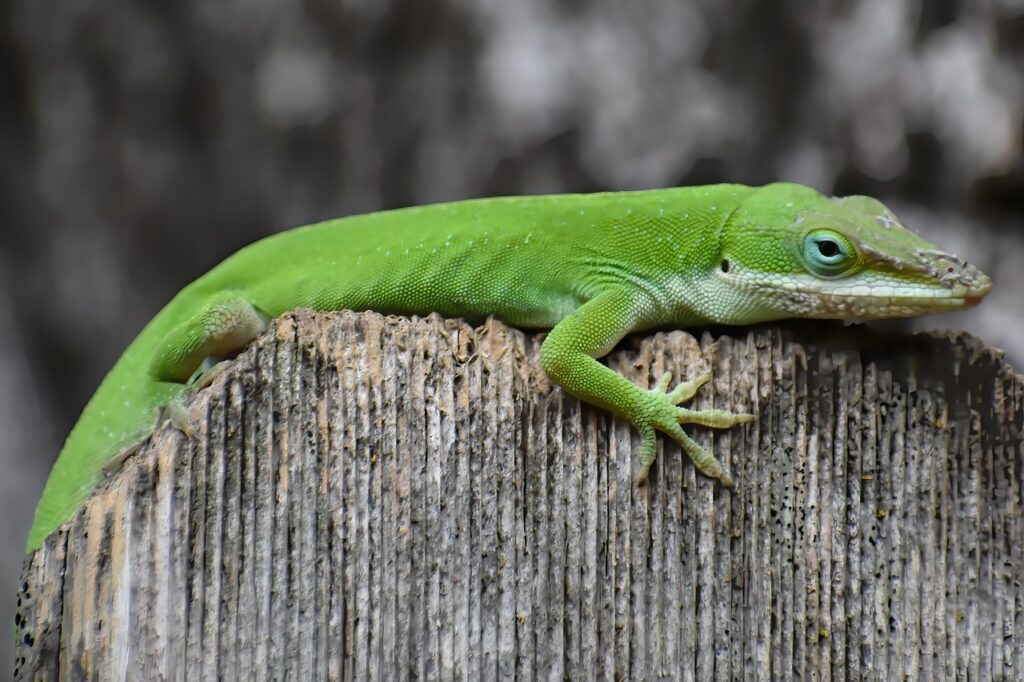
The green anole (Anolis carolinensis) has long delighted Floridians as a common sight on homes, gardens, and natural areas throughout the state. Often mistakenly called “chameleons,” these small lizards can change color from bright green to brown based on temperature, mood, and background, though their color-changing ability is much more limited than true chameleons. Males display a bright pink dewlap (throat fan) during territorial disputes and courtship displays, adding splashes of color to Florida’s landscapes.
Unfortunately, the green anole faces increasing competition from the invasive brown anole, which has forced many native anoles to retreat higher into vegetation. Research indicates the green anole has undergone rapid evolutionary changes in response to this competition, developing larger toe pads that allow better grip on higher, thinner perches where brown anoles are less common.
Florida Softshell Turtle: The Pancake-Shaped Swimmer
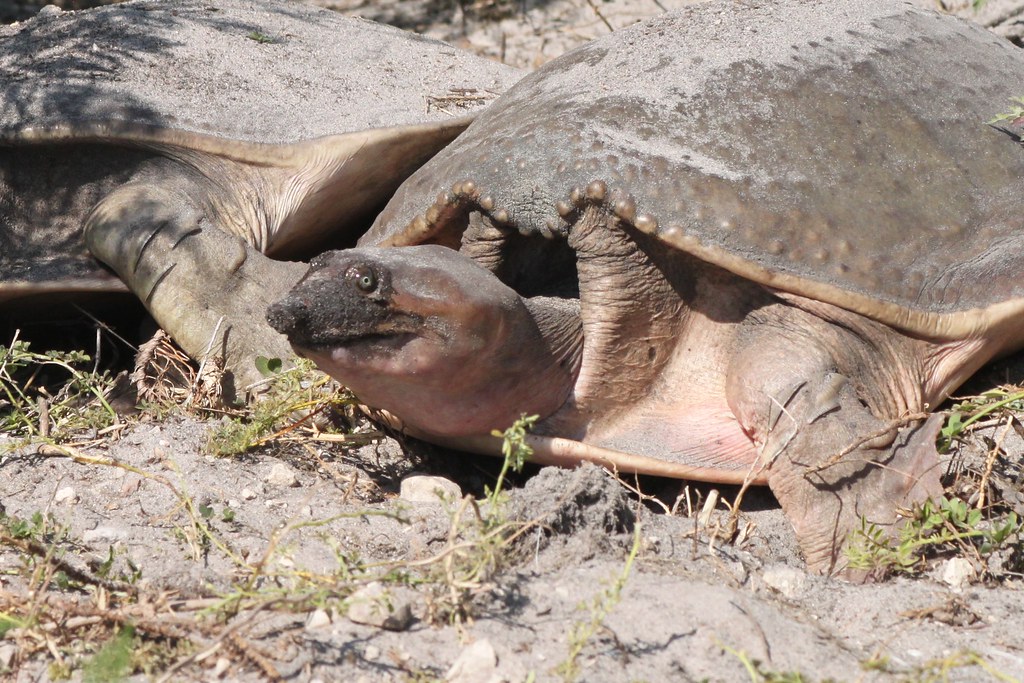
The Florida softshell turtle (Apalone ferox) presents one of the state’s most unusual reptilian appearances with its flat, leathery shell and elongated, snorkel-like snout. Unlike other turtles with hard shells, the softshell’s carapace feels like tough leather, an adaptation that allows greater mobility and speed in water. These impressive aquatic reptiles can grow quite large, with females reaching shell lengths up to 24 inches and weighing over 30 pounds. Florida softshells have adapted to become ambush predators, burying themselves in muddy bottoms with only their eyes and snout exposed, waiting for fish, crustaceans, and other prey to swim by. Though relatively common throughout Florida’s freshwater systems, they face threats from habitat degradation, road mortality during nesting migrations, and sometimes collection for food markets.
Pine Snake: The Vanishing Burrower
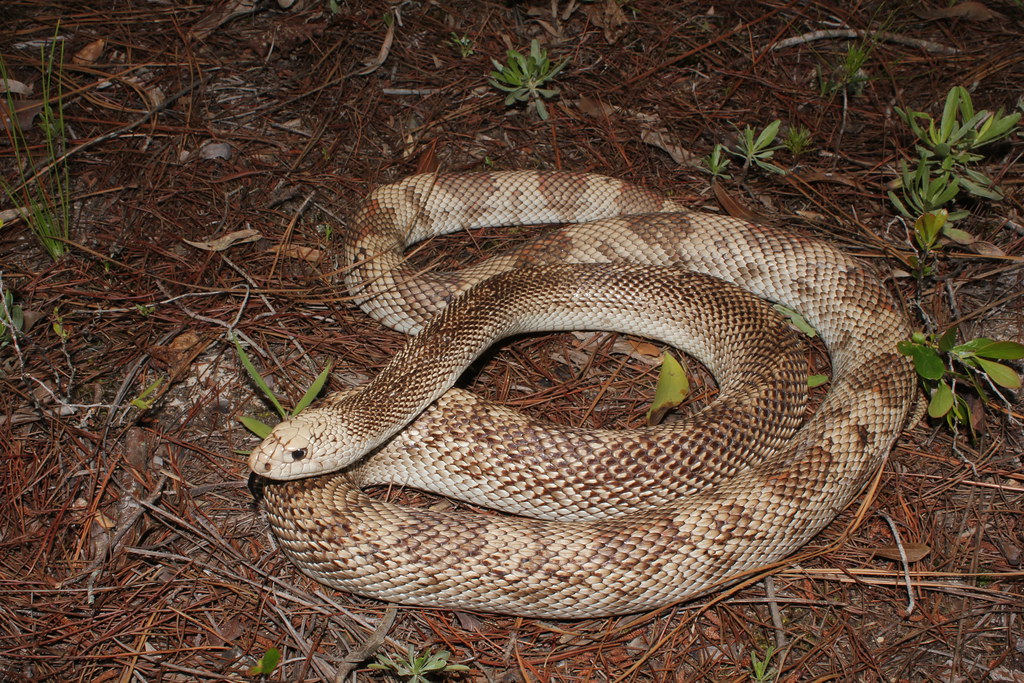
The Florida pine snake (Pituophis melanoleucus mugitus) represents one of the state’s most imperiled reptile species, having disappeared from many areas where it was once common. These large, powerful constrictors, which can exceed 7 feet in length, have adapted specialized scales on their snouts for digging through Florida’s sandy soils in search of pocket gophers and other burrowing rodents.
Pine snakes produce an unusual defensive display when threatened, flattening their heads, hissing loudly, and vibrating their tails—behaviors that unfortunately cause many to mistake them for rattlesnakes. Their preference for the same well-drained upland habitats prized for human development has led to significant population declines, with estimates suggesting they’ve lost over 80% of their historical habitat. The species is listed as threatened in Florida, with conservation efforts focused on preserving the longleaf pine ecosystems they depend upon.
Rainbow Snake: Florida’s Colorful Water Dweller
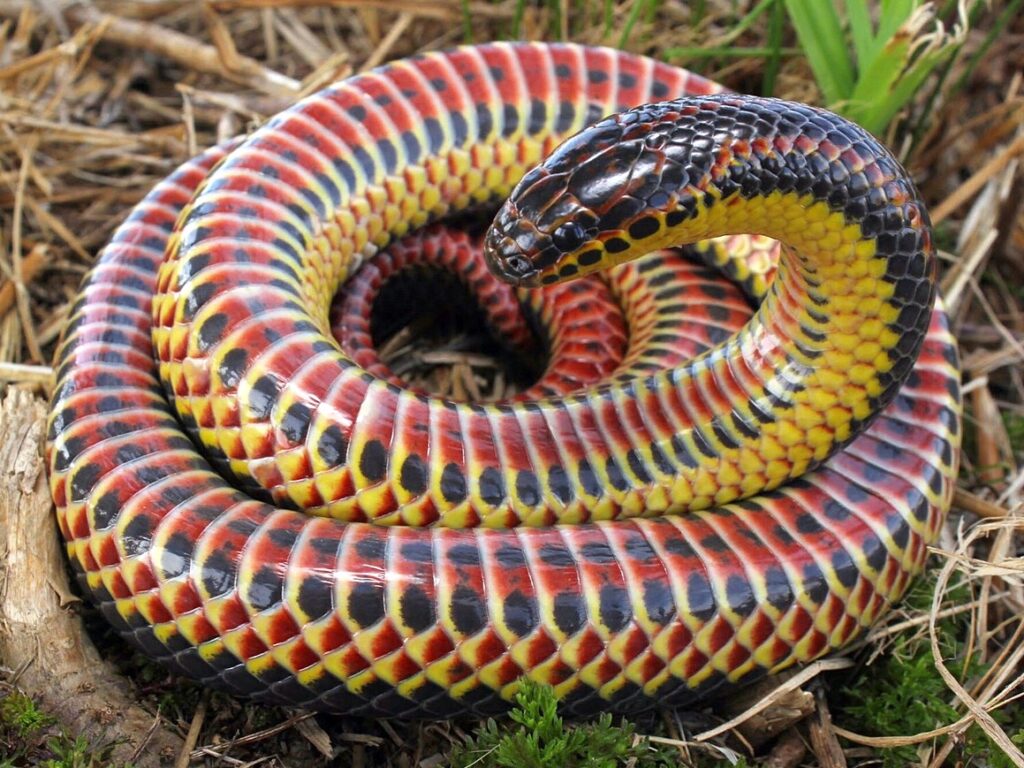
The rainbow snake (Farancia erytrogramma) lives up to its name as one of Florida’s most vibrantly colored reptiles, displaying a glossy black back with three bright red stripes running its length and a stunning red and yellow checkerboard pattern on its belly. Despite this remarkable coloration, rainbow snakes remain rarely seen due to their secretive, aquatic lifestyle, spending most of their time in rivers, streams, and lake edges where they specialize in hunting American eels.
These harmless, non-venomous snakes typically grow to about 3-4 feet in length and possess pointed tails that they may use to probe for prey in mud or vegetation. The South Florida population (F. e. seminola) was actually declared extinct in 2011 before being rediscovered in the Fisheating Creek watershed in 2018, highlighting how elusive these beautiful serpents can be and the importance of continued habitat protection.
Coral Snake: Beautiful but Deadly
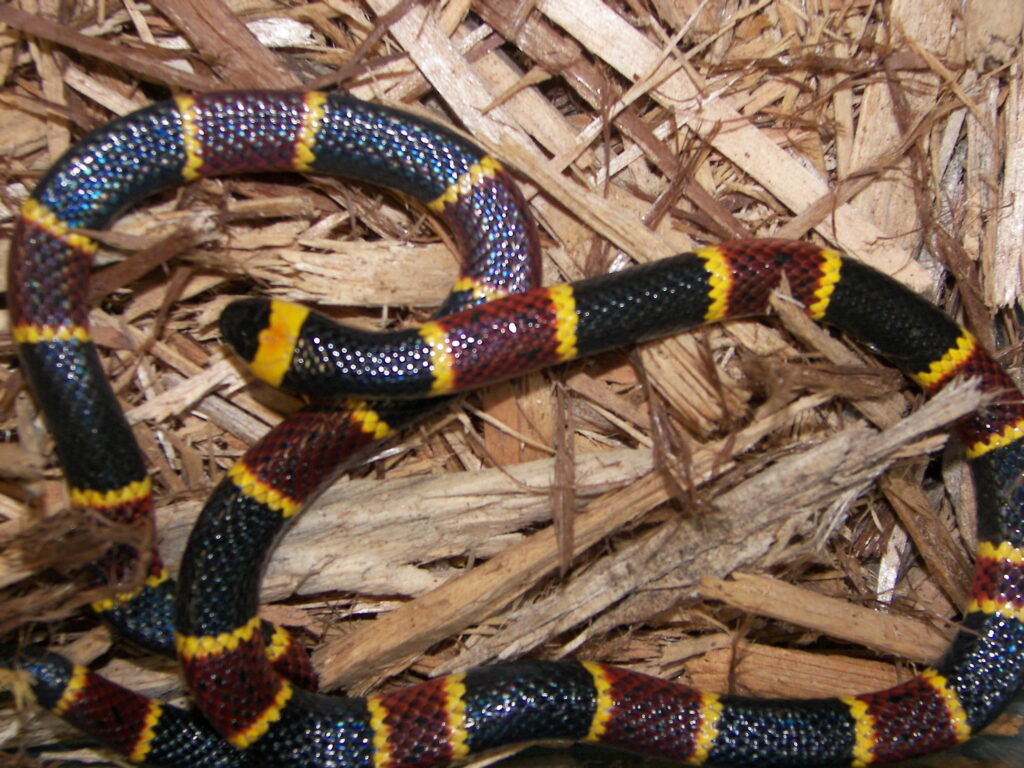
The eastern coral snake (Micrurus fulvius) stands out among Florida’s venomous reptiles with its striking pattern of red, yellow, and black bands that encircle its slender body. This distinctive coloration serves as a warning advertisement, memorialized in the rhyme “red touch yellow, kill a fellow” to distinguish it from similar-looking but harmless kingsnakes. Unlike pit vipers such as rattlesnakes, coral snakes possess a neurotoxic venom delivered through small, fixed fangs that requires a chewing motion rather than a quick strike.
These secretive elapids (relatives of cobras) spend much of their time underground or under leaf litter, making encounters with humans relatively rare despite their widespread distribution throughout the state. When threatened, coral snakes typically try to escape rather than bite, though they may display their bright coloration more prominently by flattening their bodies or hiding their heads while elevating their tails as a distraction technique.
Striped Mud Turtle: The Miniature Marvel
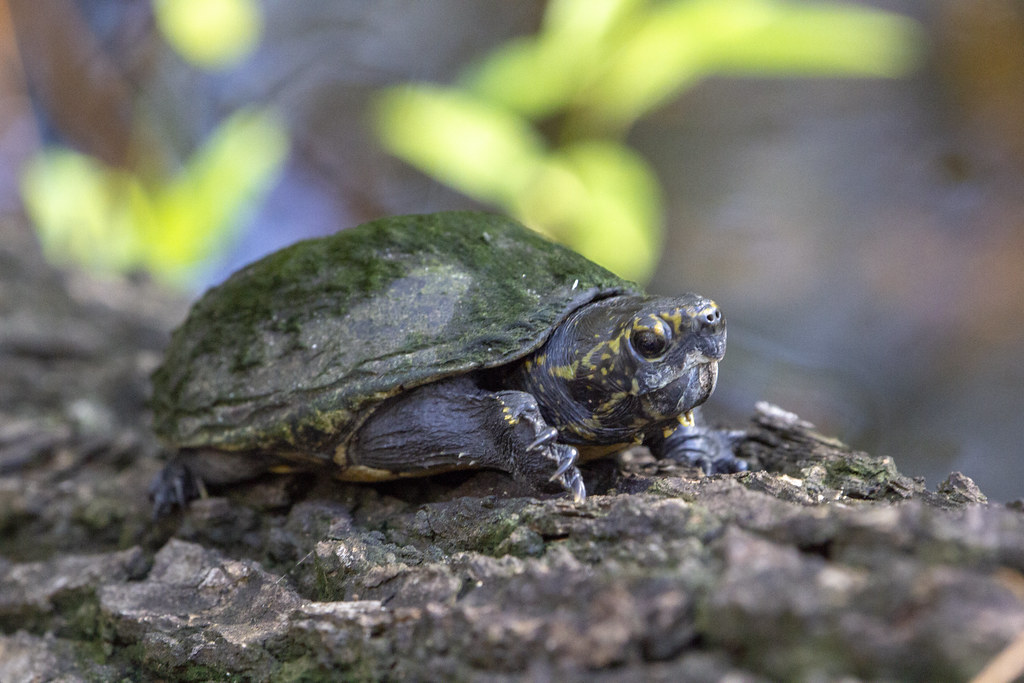
The striped mud turtle (Kinosternon baurii) proves that impressive things come in small packages, with adult shell lengths rarely exceeding 4 inches, making them among Florida’s tiniest turtle species. These diminutive reptiles feature three distinctive light stripes running the length of their dark carapace, along with two light stripes on each side of their head. Striped mud turtles have adapted to thrive in a variety of shallow freshwater habitats, from marshes and swamps to ditches and slow-moving streams, where they forage for small invertebrates, vegetation, and carrion.
Unlike many other turtles that bask regularly, mud turtles spend significant time buried in soft substrates and may even estivate (enter dormancy) during dry periods when their wetland habitats temporarily disappear. While not currently threatened throughout their range, certain populations, particularly in the Florida Keys, face challenges from habitat alteration and road mortality.
Conservation Challenges and Invasive Competitors
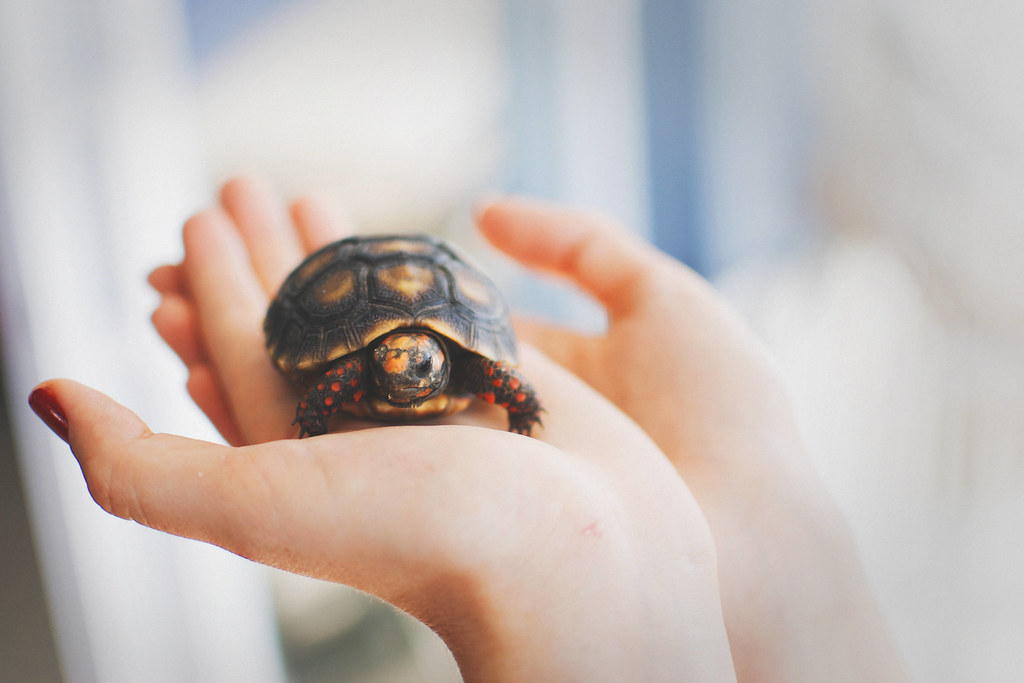
Florida’s native reptiles face a perfect storm of conservation challenges, with habitat loss, fragmentation, and climate change representing only part of the threat landscape. Perhaps equally concerning is the establishment of over 50 non-native reptile species in Florida, with Burmese pythons, Argentine tegus, and green iguanas causing particularly significant ecological damage. The Burmese python has decimated small mammal populations in the Everglades by up to 99% in some areas, creating cascading effects throughout the ecosystem that impact native reptile food sources and habitat quality. Rising temperatures from climate change are affecting reptile sex ratios in species with temperature-dependent sex determination, potentially skewing future populations toward single-sex dominance.
Conservation strategies increasingly focus on innovative approaches like creating wildlife crossings to reduce road mortality, developing environmental DNA techniques to monitor rare species, and engaging citizen scientists in tracking both native and invasive reptile populations throughout the state.
Florida’s native reptiles represent an extraordinary evolutionary success story, having adapted to the state’s diverse habitats over millions of years. From the mighty alligator to the diminutive mud turtle, these species play crucial ecological roles as predators, prey, and ecosystem engineers. Yet their future remains uncertain as human development, climate change, and invasive species reshape the landscape they’ve long called home. Conservation success stories like the American alligator demonstrate that with proper protection and management, even severely depleted species can recover. As Floridians and visitors continue to encounter these fascinating creatures, a greater understanding of their ecological importance and conservation needs becomes essential to ensuring these scaly natives remain part of Florida’s natural heritage for generations to come.

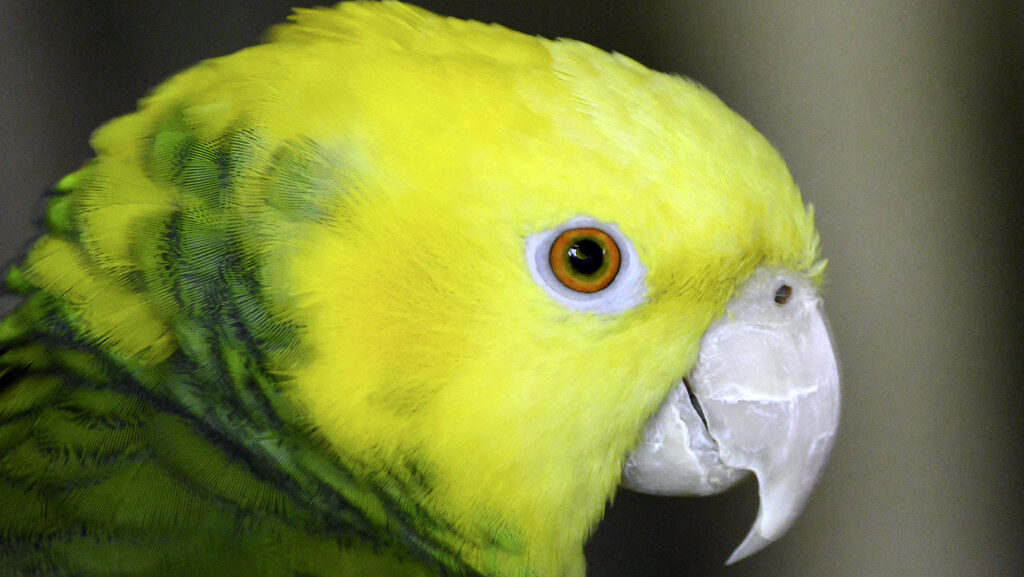
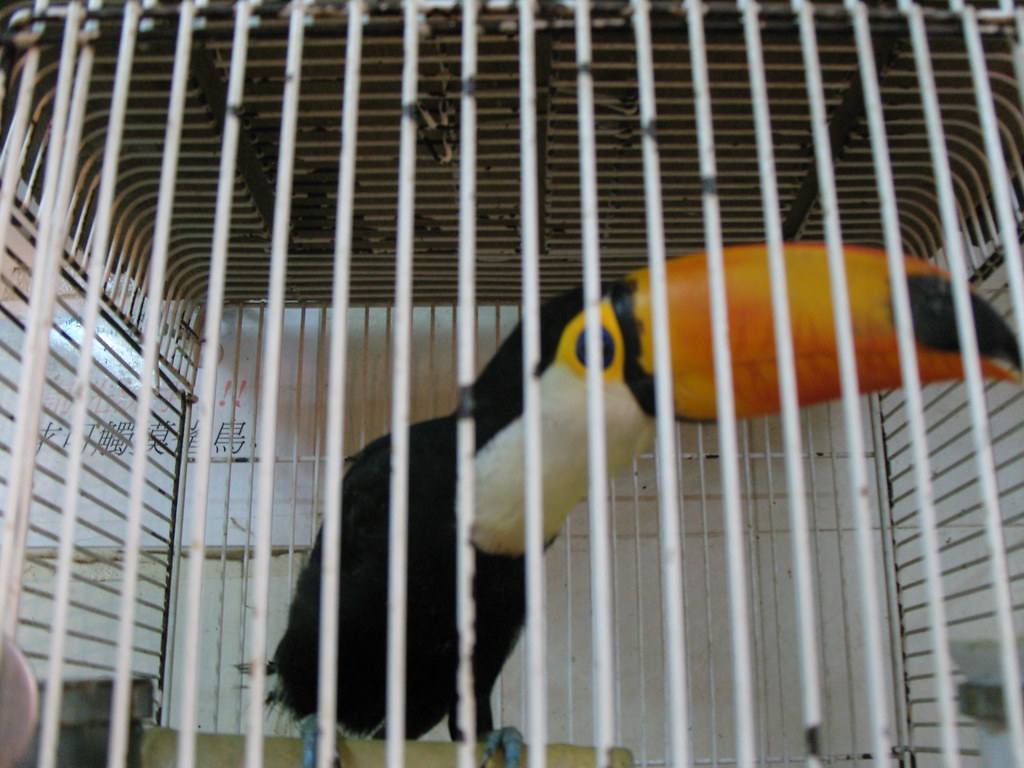
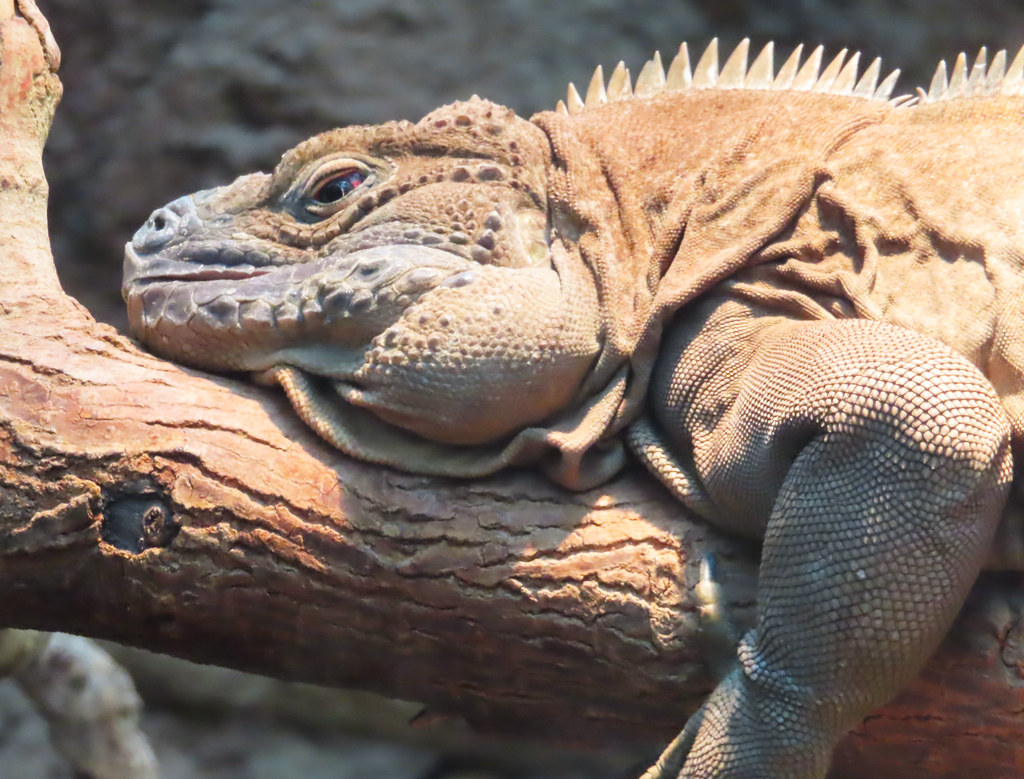
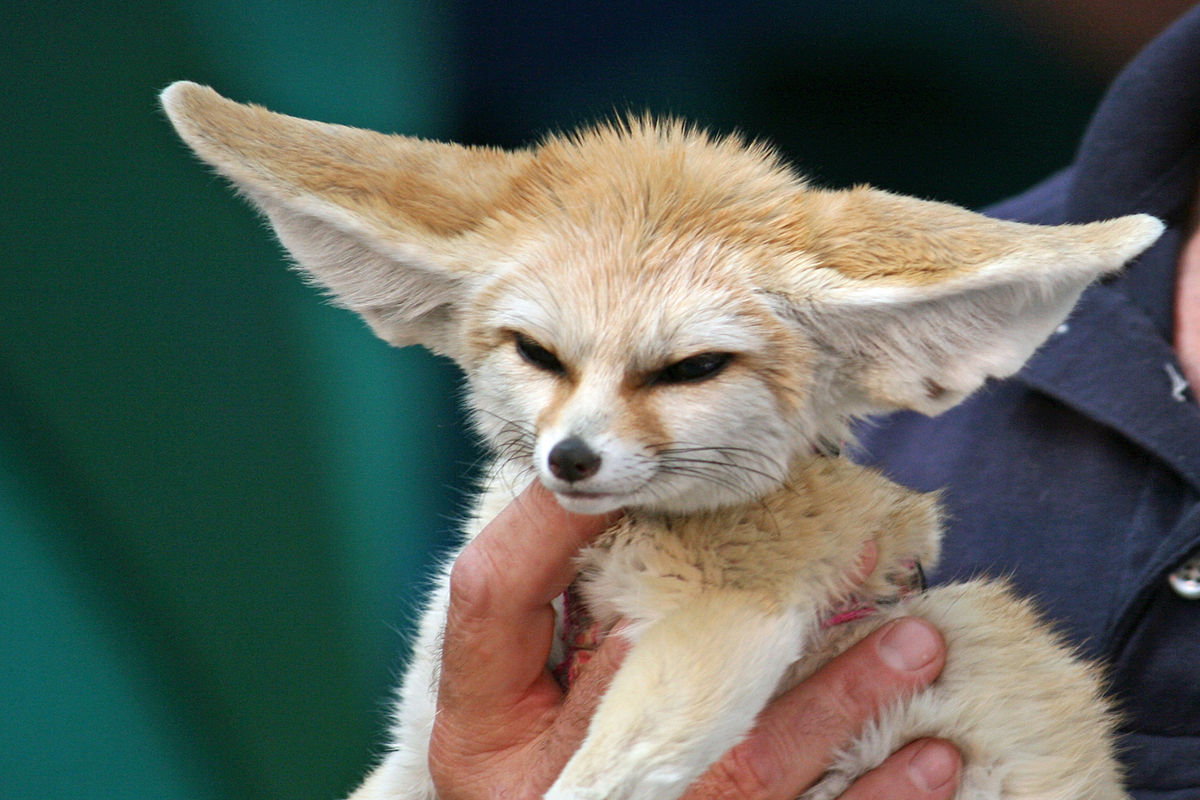

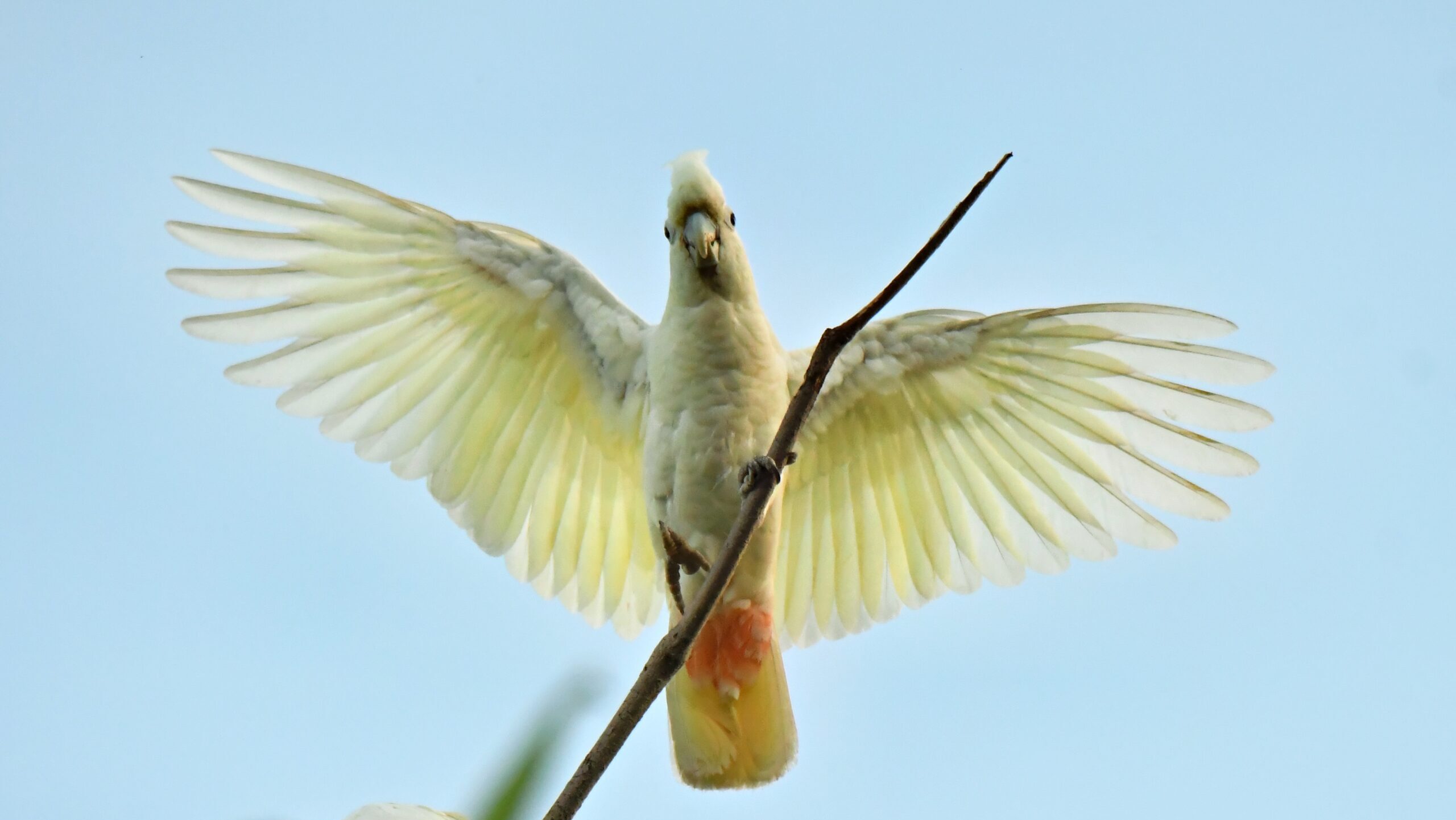


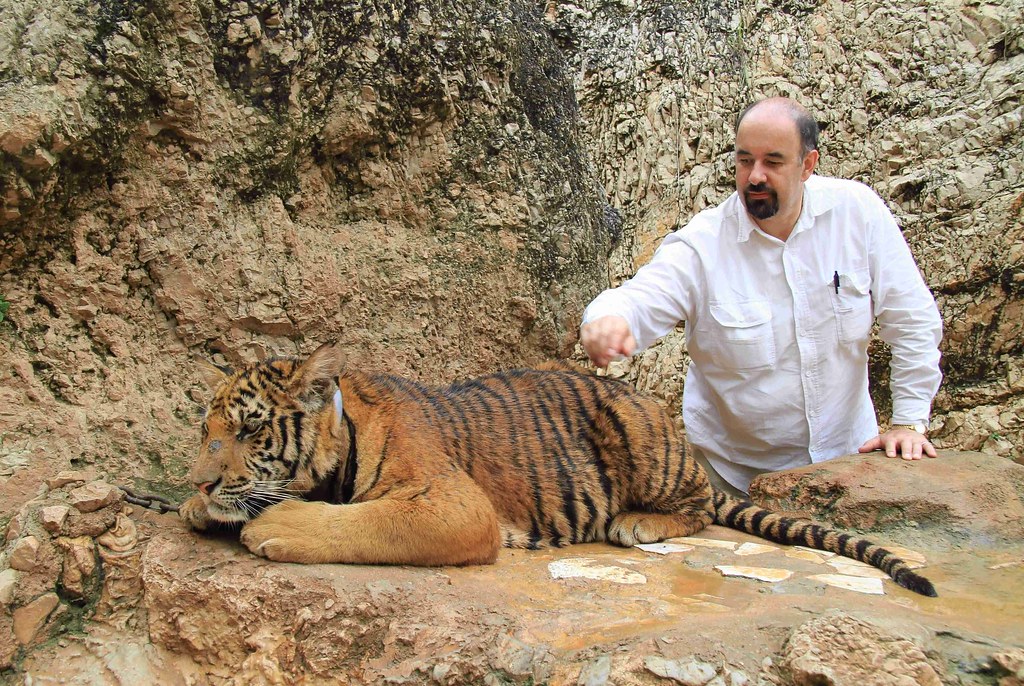
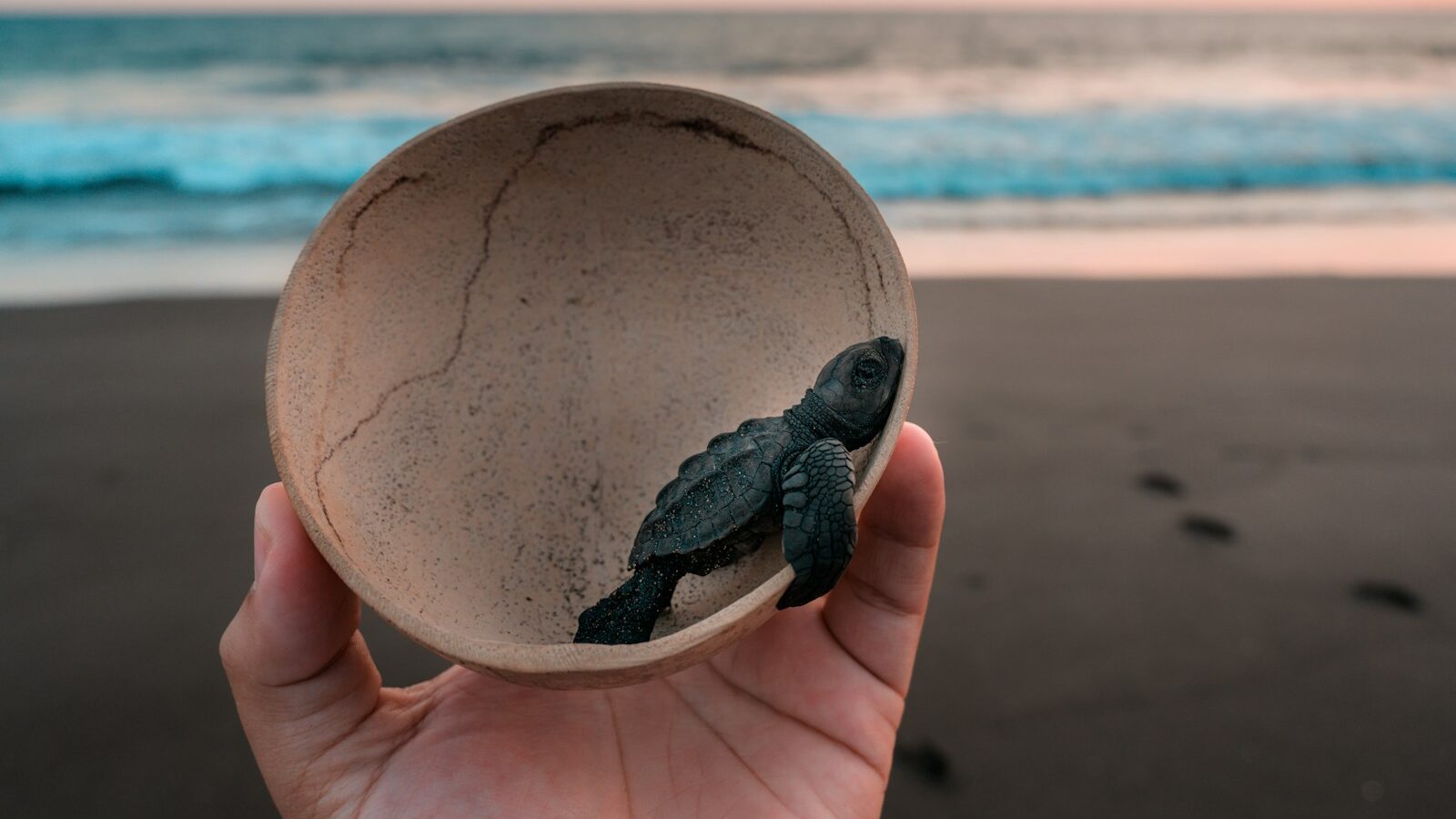




Leave a Reply